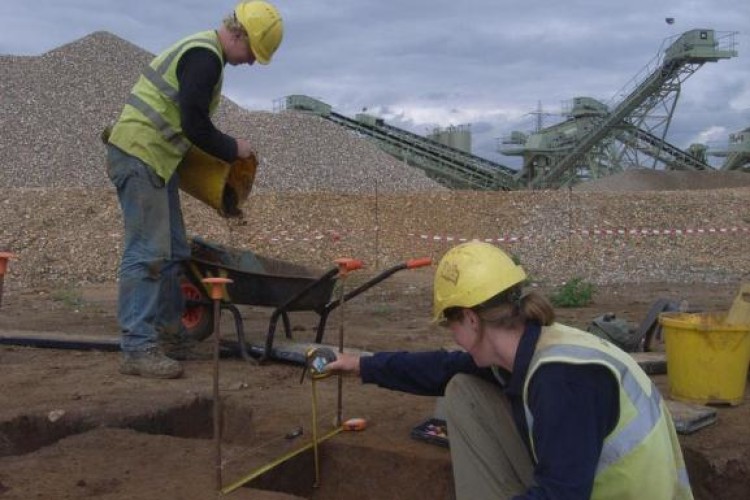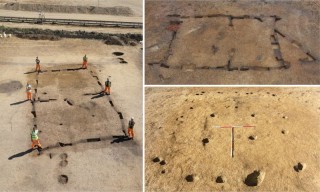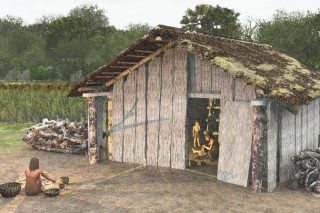Four early Neolithic houses dating back to 3700 BC have been unearthed by archaeologists at Cemex’s Kingsmead Quarry in Berkshire.
They are thought to be even older than Stonehenge, which is dated to around 3000 BC.
The discovery is unprecedented on a single site in England and challenges current understanding of how people lived more than 5,700 years ago.
The find gives archaeologists a rare opportunity to learn more about the earliest permanent settlements in prehistoric Britain and how such sites developed as people switched lifestyle from hunter-gather to settled farmer.
Few houses of this date have been found in England and rarely has more than one been found on a single site. These discoveries by excavators from Wessex Archaeology are considered key to enhancing knowledge and understanding of this period.
“Unfortunately only the ground plans have survived as any timber would have rotted away long ago,” said Dr Alistair Barclay of Wessex Archaeology.
“However, we have a good idea of what these structures may have looked like from the many house finds in Ireland, from experimental work reconstructing prehistoric buildings, and for wood working techniques from timber-built walkways of the same date, such as the Sweet Track, that were found preserved in the peat deposits of the Somerset Levels. These finds add to our knowledge of life in Neolithic times and how buildings at that date were constructed.”

It is thought that the houses were probably built by pioneer farmers that had moved into the area bringing with them the knowledge and woodworking skills necessary to construct substantial buildings. The area was ideal for a settlement, as it was close to the River Colne and there would have been ample woodland nearby.
All the houses were rectangular shaped with the largest being 15 x 7 metres. Two were constructed out of upright oak planks set into foundation trenches, while the others were built using wooden posts.
Pottery, flint tools, arrowheads, rubbing stones for grinding corn and charred food remains were recovered from the buildings confirming the lifestyle of the inhabitants and the approximate age of the houses.
Radiocarbon dating has been used to confirm the age of one of the houses (3800-3640 BC) and further dates will be obtained for the other buildings later in 2013, on the charred remains of cereal and hazelnut shell.
The excavations are part of Cemex’s £4m archaeological programme on the site, which has been in operation since 2003.
Cemex sustainability director Andy Spencer said: “In addition to extracting valuable building materials that go into buildings all around us, quarrying has given us some wonderful archaeological finds that tell us more about our ancestors and how they lived. At Kingsmead, the scope of the finds covers thousands of years and has provoked some interesting debate about the people who lived there.”
Got a story? Email news@theconstructionindex.co.uk





